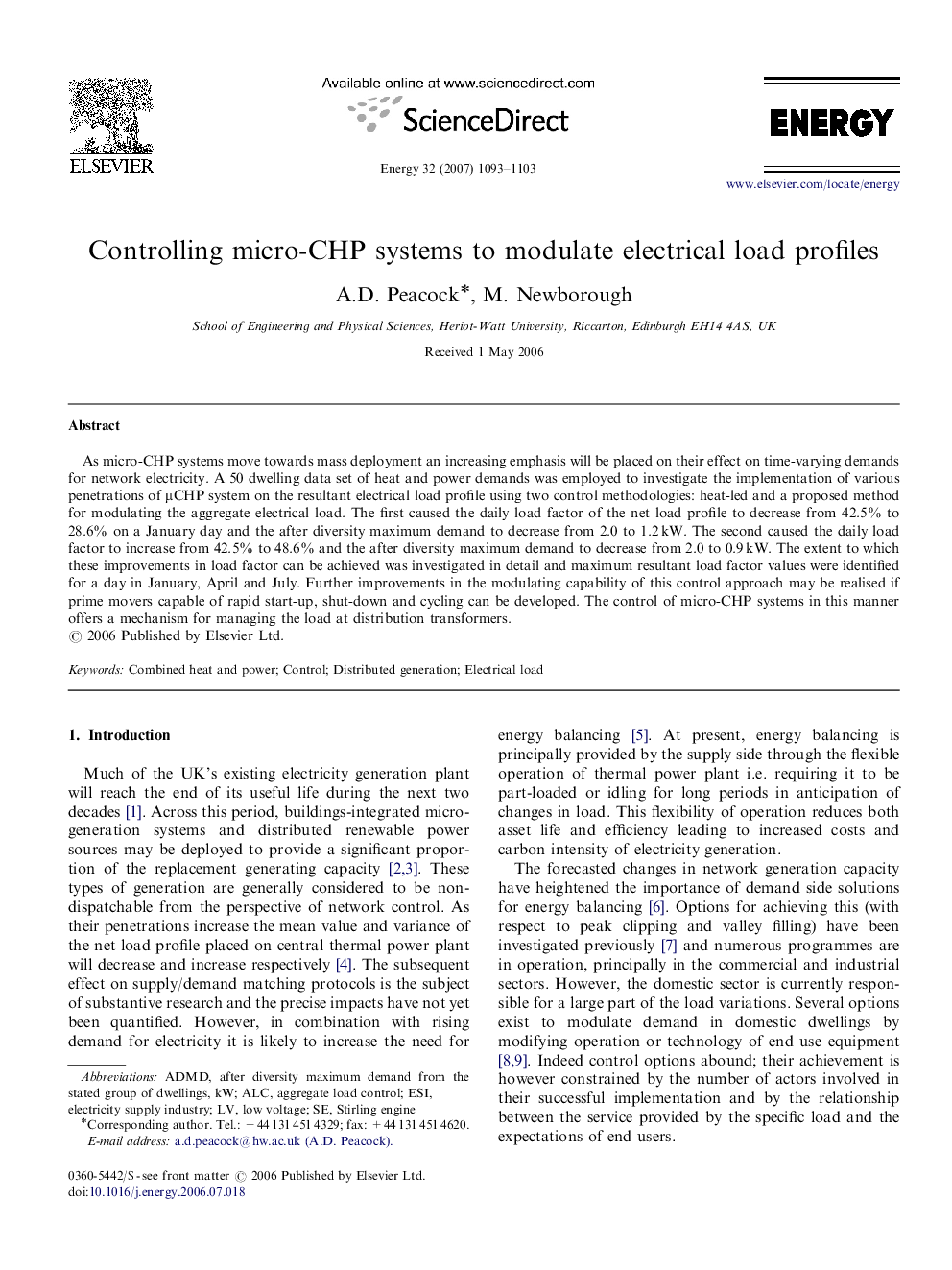| Article ID | Journal | Published Year | Pages | File Type |
|---|---|---|---|---|
| 1735816 | Energy | 2007 | 11 Pages |
As micro-CHP systems move towards mass deployment an increasing emphasis will be placed on their effect on time-varying demands for network electricity. A 50 dwelling data set of heat and power demands was employed to investigate the implementation of various penetrations of μCHP system on the resultant electrical load profile using two control methodologies: heat-led and a proposed method for modulating the aggregate electrical load. The first caused the daily load factor of the net load profile to decrease from 42.5% to 28.6% on a January day and the after diversity maximum demand to decrease from 2.0 to 1.2 kW. The second caused the daily load factor to increase from 42.5% to 48.6% and the after diversity maximum demand to decrease from 2.0 to 0.9 kW. The extent to which these improvements in load factor can be achieved was investigated in detail and maximum resultant load factor values were identified for a day in January, April and July. Further improvements in the modulating capability of this control approach may be realised if prime movers capable of rapid start-up, shut-down and cycling can be developed. The control of micro-CHP systems in this manner offers a mechanism for managing the load at distribution transformers.
